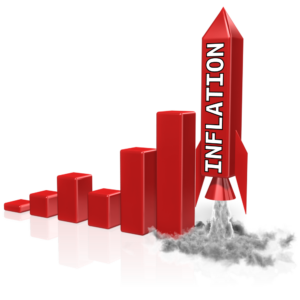Understanding the Surge in Russia’s Inflation: A Closer Look from Extreme Investor Network

As the year winds down, one economic indicator that stands out significantly is Russia’s Consumer Price Index (CPI), which reached a staggering 9.5% this December. This figure marks an increase from 8.9% year-over-year in November and is somewhat below the anticipated 9.7%. At Extreme Investor Network, we delve deep into the economic nuances that underlie these numbers to equip investors with essential insights and foresight.
The Current Inflation Landscape
The incremental rise of 1.3% in prices on a monthly basis highlights the ongoing economic strain felt by the average Russian consumer. As the war continues to exert pressure on the nation’s economy, Russians are grappling with a reality where essentials have become increasingly unaffordable. Notably, the prices of services have edged up slightly to 11.5%, and non-food goods have also seen an increase, rising from 5.7% year-on-year to 6.1%.
Grocery prices tell an even grimmer story, soaring from 9.9% year-on-year to a troubling 11.1%. This spike can largely be attributed to the country’s challenges in securing reasonably priced imports, further complicating the inflation picture. Moreover, core inflation has risen by 1% monthly and now sits at an alarming 10% when observed over the last four quarters. The stark difference of 11.5% between the inflation rate and the central bank’s target of 4% is indicative of the growing economic discontent.
Central Bank Policy: A Balancing Act
Despite the turbulent economic environment, Russia’s Central Bank maintained its key policy rate at a hefty 21% in December. This decision is pivotal as it underscores a broader view: the inflationary pressures are not solely a function of money supply, but more about government spending characterized by an escalating war effort. The Kremlin has allocated a substantial 10 trillion rubles (approximately $100 billion) towards military expenditures, a figure that is anticipated to grow as global tensions persist.
Economic Resilience Amidst War
Surprisingly, analysts once optimistic about rate hikes in December underscored the efficiency of government borrowing mechanisms. The Kremlin’s command for banks to issue direct soft loans totaling 25 trillion rubles (around $250 billion) specifically for military contractors highlights a critical strategy: fueling the economy amidst war while dealing with rampant inflation is a delicate balancing act.
Interestingly, despite these challenges, Russia’s economy still managed a growth rate of 4% in 2024, showcasing its ability to adapt to a shifting trade environment without its Western allies.
The Inflationary Effects of War
What this situation elucidates is a timeless economic truth: nothing is more inflationary than war. The parallels can be drawn to historical instances where conflict led to national economic upheaval, revealing cyclical patterns that investors need to watch closely.
At Extreme Investor Network, we strive to keep our readers informed about such complexities. Understanding the multifaceted aspects of inflation and government spending during times of conflict is crucial for making informed investment decisions.
As we look towards the future, keeping an eye on Russia’s economic evolution is imperative for investors aiming to navigate the unpredictable waters of global economics. To stay updated and gain invaluable insights, keep reading our latest articles and analyses at Extreme Investor Network. Let us help you build your portfolio amidst the complexities of today’s economic landscape.

